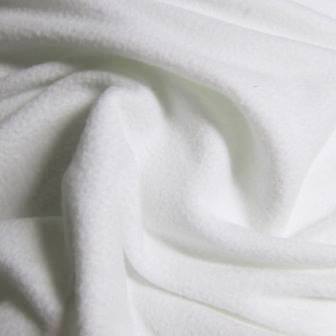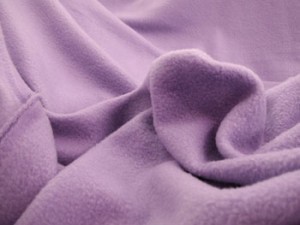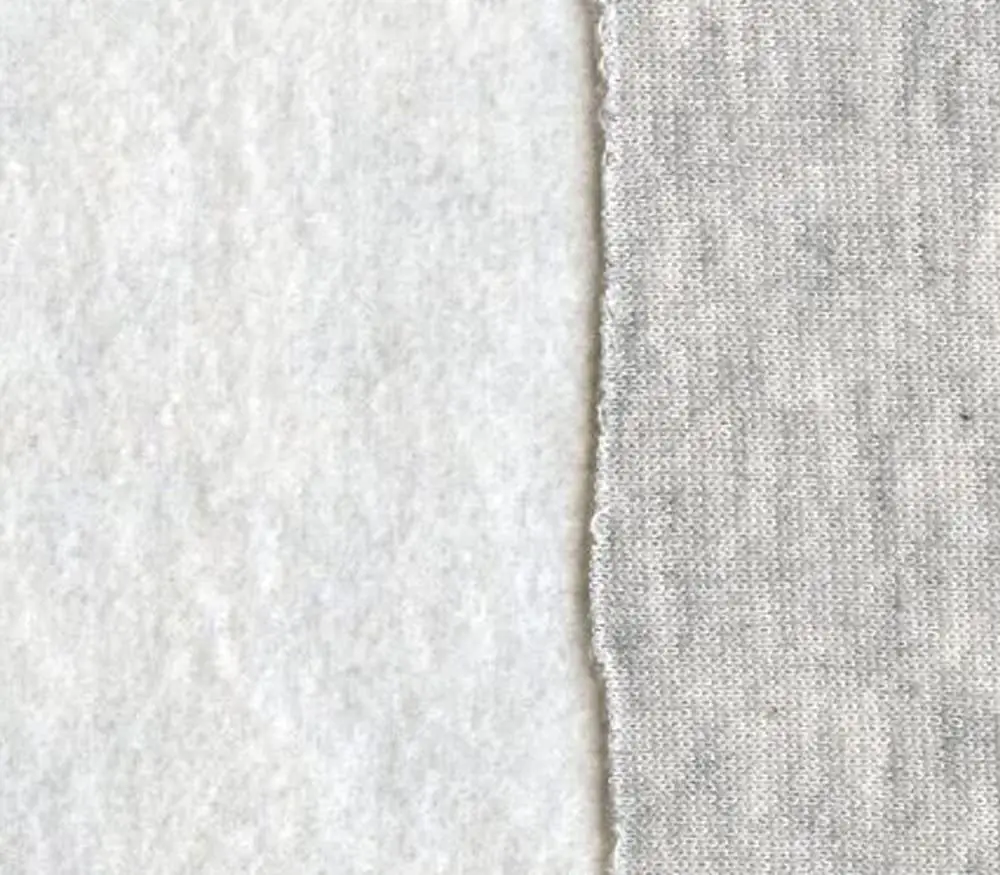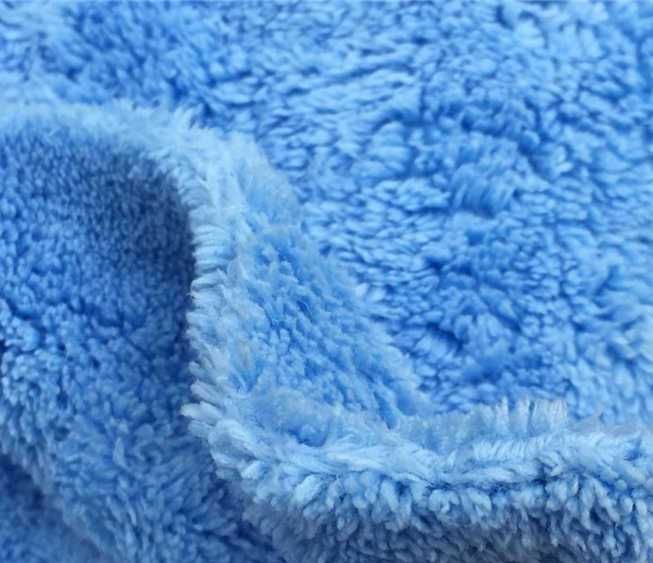Chances are you’ve worn a fleece jacket once in your life even though you did not recognize the material. Fleece is a popular fabric in outdoor apparel because of its ability to look nice while keeping you warm in the toughest of circumstances.
Fleece is a synthetic polyester material made mostly from plastic, and it is a relatively new discovery in the textile industry.
Despite the fact that it is not composed of wool, fleece materials are used to produce anything from warm blankets to socks and coats. However, one frequent concern about fleece is, does it shrink?
Due to the fact that fleece is a synthetic fabric, the quality and materials will vary. This influences whether or not the fleece shrinks after washing. Some fleeces will not shrink at all, while others will shrink a little. There are natural and man-made types, and the latter is not likely to shrink.

Let’s get into this in detail.
In comparison to wool, fleece is lighter, softer, and more breathable and in most situations, fleece shrinks less than other fabrics such as cotton or linen.
The primary cause of fleece shrinkage is heat. Washing and drying fleece in hot water or at high temperatures can cause it to shrink. The easiest approach to avoid shrinking fleece is to choose polyester fleece and avoid washing or drying in extreme heat.
Although fleece is not as eco-friendly as wool, it is gentler as it does not irritate the skin. Fleece manufactured from Polyester is significantly less likely to shrink, but fleece created from other artificial fibers is more likely to shrink.
Advantages and Disadvantages of Fleece
Advantages
1.) Gives you a cozy feeling
Fleece is soft and warm, making it one of the most popular choices for staying warm in the winter.
Its capacity to keep us warm is its most valuable feature, which is why it is one of the most popular winter fabrics.
Because fleece is commonly used in cold conditions, it should come as no surprise that it is an excellent insulator.
2.) It is lightweight and comfortable
In contrast to conventional wool sweaters, which are heavy, bulky, and irritating, fleece is light, compact, and pleasant to the touch.
This offers it a major edge over typical wool clothing when it comes to outdoor activities where weight and comfort are important.
3.) Fleece repels water keeping you dry at all costs
Because of the cooling qualities of evaporation, it turns out that it’s considerably simpler to shed body heat while you’re wet.
Because being cold and wet outside may swiftly lead to life-threatening hypothermia, it’s essential to avoid it at all costs.
Fortunately, fleece is inherently hydrophobic, or water repellent, making it suitable for usage in wet circumstances.
Furthermore, when wet, fleece retains less than 1% of its weight in water and can keep you warm even after being soaked in a river crossing. It also dries fast, allowing you to immediately return to being toasty and dry.
Disadvantages
1.) Fleece has low melting point
We have mentioned above that you shouldn’t wash and dry fleece in heat as it will degrade the material. It just so happens that fleece is extremely vulnerable to heat damage, even at very low temperatures.
Flames, as well as washing it in hot water, ironing it, or drying it at high temperatures, can cause it to shrink and even melt.
2.) It retains odor
Because fleece is hydrophobic in nature, it is difficult to wash. Soaps and detergents, when combined with water, have a tough time really reaching between fleece fibres, where germs typically thrive. As a result, after a few uses, fleece begins to smell foul.
3.) It has a negative environmental impact
Fleece is mostly constructed of petroleum-derived plastic. Petroleum is a liquid combination of chemicals taken from bedrock that is used to manufacture a variety of goods ranging from gasoline to polymers.
In addition to the carbon footprint of merely mining this substance from the earth, the burning of petroleum and the manufacture of plastics are both contributing to the rising concentrations of greenhouse gases in our atmosphere.
Also, fleece fibres tend to pill over time, particularly after washing. Pilling occurs when fibres cluster together and form little balls.
These small threads become intermingled into our water system, where they pollute our streams and seas with tiny plastic microfibers, especially when we wash fleece in a washing machine.
Types of fleece fabric
The different types of fleece are-
1.) Polar fleece- When we talk of fleece, we usually think of polar fleece. It’s breathable, soft, long-lasting, and simple to care for.
Polar fleece is made to keep you warm by integrating air spaces between the fibres, which assist to retain your body heat and keep you nice and cozy in freezing temperatures.
2.) Microfleece- It is a lighter fabric than polar fleece. Microfleece is incredibly soft to touch, and it is a thin fabric, making it ideal for layering beneath other coats.

Microfleece coats are extremely breathable, as the fabric has good ventilation, air circulation, and moisture wicking qualities while slowing piling and increasing wind resistance.
3.) Anti-pill fleece- One of the disadvantages of fleece is that it can pill up. These pills are generated by the fibres rubbing together during the wash as a result of static electricity or abrasion.

Because of the tendency of fleece to pill, anti-pill fleece was developed. This fleece resists pilling as a result of being used and cleaned.
The fleece was treated with a chemical that prevents the fibres from becoming twisted, therefore minimising pilling.
4.) Sherpa fleece- Sherpa fleece is the most similar to sheep’s wool in look and texture. Despite this, it is still constructed entirely of polyester.

It is also more insulating and warmer than other varieties of fleece therefore, it is often used as a lining in coats, sweatshirts, and cardigans. Sherpa fabric is also more stretchy than other varieties of fleece fabric.
5.) Cotton fleece- While the majority of the fleece on our list is synthetic and composed of polyester, cotton fleece is exactly what it sounds like: made of genuine cotton.
A significant distinction between cotton fleece and synthetic fleece is that cotton fleece is more breathable.

While other types of fleece may feel uncomfortable, but cotton fleece will circulate air more effectively while keeping you warm.
However, cotton shrinks and it is something to keep in mind while selecting between different types of fleece fabric.
6.) Coral fleece- Coral fleece, also known as raschel fleece, is a high pile fleece that is not as puffy as sherpa fleece.

It resembles polar fleece but is fuzzier. In reality, it has the appearance of smooth synthetic fur.
Coral fleece is extremely soft and is typically seen in higher-priced fleece coats, shirts, blankets, and baby goods. It’s wonderful since it doesn’t pill like other fleece.
7.) Sponge fleece- Sponge fleece is a cotton-polyester fleece combination that is soft and comfortable. It’s warm and super comfy.
How to keep fleece from shrinking?
Most synthetic materials, such as fleece, may appear fragile, yet they are relatively easy to care for.
To avoid wear and increase the life of the cloth, basic guidelines must be followed.
Here are some methods to help you avoid shrinking fleece:
→ Wash this item in either cold or lukewarm water.
→ Wash it by hand or use the mild wash cycle.
→ Before washing, always turn the garment inside out.
→ Air-dry the clothes by hanging it up to dry. If you need to get it done quickly, use the tumbler’s lowest heat setting.
→ When washing fleece garments, never use bleach or softening solutions.
→ Remember, never dry clean your fleece garments.
→ Ironing is not permitted since it damages the cloth. As an alternative, iron the non-face side on the lowest heat setting.
→ This material is not suitable for dyeing, therefore when purchasing the item, select the color you require.
→ Only wash it with other things of the same type since it will attract lint.
→ Choose an anti-pill variant to avoid fibre balls all over your clothes.
Now, just in case you have washed your fleece and it has shrunk. What do you do?
Well, don’t worry. We have some solutions for you.
Read below.
Unfortunately, it is not always possible to avoid shrinking. If you’ve already shrunk your fleece, there are a few things you may do to restore it to its original size.
To begin, it’s worth noting that fleece and other fibres are purposely stretched throughout the manufacturing process to enhance its durability.
To accomplish this, place your fleece in a tub filled with lukewarm water. Add some shampoo or conditioner into your water. Allow this to soak in the water for 30 minutes.
After you’ve finished, rinse it with water but don’t twist it to get rid of excess water. Finally, let the cloth air dry. The air-drying procedure will aid in stretching out the fleece and restoring it to its natural form.
What type of fleece is suitable for you?
Fleece may be a challenging fabric to deal with since there are so many varieties to choose from. Unfortunately, there is no one fleece that is suitable for all scenarios, so it is essential to decide what you intend to use it for first.
If you want to wear your fleece around the house, you should buy a heavier Polar Fleece jacket. These are often less costly and warm.
Polar fleece, while warm and cuddly, is not a good choice for outdoor use because it is rather heavy and thick. It might be inconvenient to wear as a layer under another insulating layer or a rain jacket.
If you’re searching for a fleece for a hiking trip, you’ll probably choose microfleece, especially if it has a grid design.
These jackets are a little more costly, but they breathe well, are more compact and easy to layer, and are wind resistant, all of which are wonderful features when you’re out in the mountains.
See also: Do Moisture-Wicking Shirts Shrink?
Final Words
The amount of shrinkage in fleece is heavily influenced by the material. But shrinking shouldn’t keep you away from using this fabric as now you have all of the knowledge you need to properly care for your fleece and avoid shrinking with this article.
Fleece is a fantastic innovation, but it does have some drawbacks. Simply follow the prescribed methods to use this fabric longer and to utilize its full benefits.







